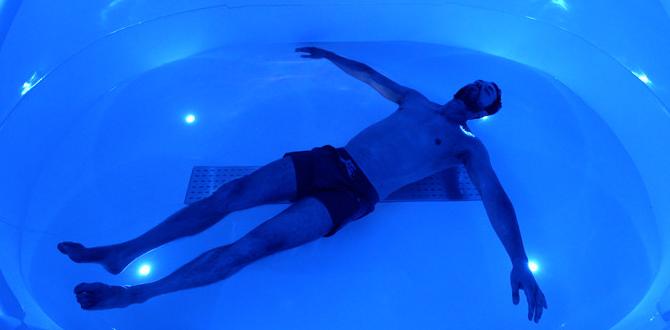Antwerp’s best neighborhoods to stay offer vibrant atmospheres, easy access to attractions, and comfortable amenities for every traveler. Whether you seek historical charm, a lively social scene, or family-friendly tranquility, this guide highlights top areas like the historic center for culture vultures, the trendy South for art lovers, and cozy residential pockets for a relaxed pace. Find your perfect base for an unforgettable Belgian adventure.
Planning a trip to Antwerp can be exciting, but figuring out where to stay can feel a bit overwhelming. With so many unique areas, each offering a different vibe, it’s easy to get lost in the choices. You want a location that fits your travel style, whether you’re here for the diamonds, the fashion, the art, or just to soak in the atmosphere. Don’t worry, finding the perfect neighborhood is simpler than you think! Think of this as your friendly guide to discovering Antwerp’s most welcoming and convenient spots. Let’s make sure your Belgian adventure starts with a fantastic home base, ensuring comfort and easy exploration every step of the way.
Why Choosing the Right Antwerp Neighborhood Matters
Picking the right neighborhood in Antwerp is key to enjoying your visit. It’s not just about where you sleep; it’s about your entire experience. Staying in a well-located area means less time commuting and more time exploring. Imagine stepping out your door and being just minutes away from world-class museums, charming cafes, and bustling markets. Conversely, a poorly chosen spot might mean long tram rides or feeling disconnected from the city’s heartbeat. For families, proximity to parks and child-friendly activities is a must. For solo travelers or couples, a lively but safe area might be preferred. And for those who value peace and quiet, a more residential feel could be ideal. We’ll guide you through Antwerp’s best to ensure your trip is seamless and truly enjoyable, making every moment count.
Antwerp’s Top Neighborhoods: Your Essential Guide
Antwerp is a city of diverse districts, each with its own character. From the historic heart to trendy hotspots, there’s a perfect corner for everyone. Let’s dive into the neighborhoods that consistently rank high for travelers, considering factors like atmosphere, attractions, accessibility, and overall experience.
1. Antwerp Historic Center (Grote Markt & Surrounding Areas)
This is the beating heart of Antwerp, a place where history comes alive. If you want to be surrounded by iconic sights, stunning architecture, and a vibrant atmosphere, the historic center is your top choice. It’s where you’ll find the magnificent Grote Markt (Grand Square) with its Guildhalls and City Hall, and the breathtaking Cathedral of Our Lady. Staying here means you can easily wander through cobbled streets, discover hidden courtyards, and be within walking distance of many key attractions.
What to Expect:
- Vibe: Bustling, historic, picturesque, lively, tourist-friendly.
- Attractions: Grote Markt, Cathedral of Our Lady, MAS | Museum aan de Stroom (short walk), Rubens House (short walk), Diamond Quarter (nearby).
- Food & Drink: Abundant cafes, traditional Belgian restaurants, pubs, and fine dining options.
- Shopping: Souvenir shops, local boutiques, and the famous Meir shopping street is a short stroll away.
- Best for: First-time visitors, culture enthusiasts, history buffs, travelers who want to be in the thick of it all.
Pros:
- Unbeatable access to major landmarks.
- Atmospheric and visually stunning.
- Excellent public transport links.
- Plenty of dining and entertainment options.
Cons:
- Can be crowded, especially during peak season.
- Accommodations might be more expensive.
- Can be noisy at night due to lively nightlife in some parts.
2. Antwerp South (Het Zuid)
Antwerp Zuid, or ‘The South’, is the city’s artistic and bohemian quarter. It’s a vibrant district known for its beautiful 19th-century architecture, impressive museums, trendy boutiques, and a fantastic culinary scene. If you love art, design, and a sophisticated yet relaxed atmosphere, this is the place for you. The area buzzes with local life, art galleries, and independent shops, offering a more contemporary feel than the historic center but still retaining its charm.
What to Expect:
- Vibe: Artistic, trendy, sophisticated, lively, local.
- Attractions: Royal Museum of Fine Arts (KMSKA), FOMU (Photo Museum), MuHKA (Contemporary Art Museum), various art galleries.
- Food & Drink: Chic cafes, innovative restaurants, stylish bars.
- Shopping: Designer boutiques, vintage stores, independent fashion labels.
- Best for: Art lovers, fashionistas, couples, foodies, travelers seeking a stylish and cultured experience.
Pros:
- Rich cultural offerings with world-class museums.
- Excellent dining and nightlife.
- Beautiful architecture and pleasant streets for walking.
- Good public transport connections.
Cons:
- Can be pricier for accommodation and dining.
- Slightly removed from the absolute historical core, though still very walkable or a short tram ride.
3. Sint-Andries District
Nestled between the Historic Center and the fashionable South, the Sint-Andries district is a hidden gem. It’s a charming area filled with narrow streets, antique shops, quirky boutiques, and cozy pubs. It offers a more intimate and local feel while still being incredibly close to major attractions and the trendy South. It’s ideal for those who appreciate discovering unique finds and enjoying a more relaxed pace away from the largest crowds.
What to Expect:
- Vibe: Bohemian, charming, antique, local, tranquil yet central.
- Attractions: Numerous antique shops, small galleries, St. Andrew’s Church.
- Food & Drink: Intimate cafes, traditional eateries, cozy bars.
- Shopping: Antique stores, vintage shops, independent boutiques.
- Best for: Shoppers seeking unique items, those who enjoy exploring off-the-beaten-path, travelers wanting a central but quieter base.
Pros:
- Central location with easy access to both the historic center and The South.
- Unique shopping experience.
- More relaxed and less tourist-heavy atmosphere.
- Good value for money compared to the absolute center.
Cons:
- Fewer large hotels, more boutique options or apartments.
- Nightlife is more subdued than in other areas.
4. Old Port Area (Eilandje)
Eilandje, meaning ‘little island’, is Antwerp’s historic port district. This area has undergone significant regeneration and now blends maritime heritage with modern architecture and vibrant cultural institutions. It’s home to the impressive MAS museum, offering panoramic city views, and the Red Star Line Museum, detailing the stories of emigrants who sailed from Antwerp. It’s a fascinating area with a unique atmosphere, perfect for those interested in Antwerp’s seafaring past and enjoying waterfront views.
What to Expect:
- Vibe: Maritime, modern, historic, cultural, scenic.
- Attractions: MAS | Museum aan de Stroom, Red Star Line Museum, historic ships, waterfront promenades.
- Food & Drink: Excellent seafood restaurants, waterfront cafes, modern eateries.
- Shopping: Limited to museum shops and nearby city center.
- Best for: Museum-goers, history enthusiasts, those who enjoy modern architecture with a historical backdrop, photographers.
Pros:
- Stunning waterfront location with great views.
- World-class museums.
- Modern amenities and a regenerated feel.
- Good connectivity to the historic center.
Cons:
- Can feel a bit quieter in the evenings compared to the city center.
- Fewer accommodation options compared to the absolute core.
5. Berchem (around Berchem Station)
For travelers looking for a more local and potentially budget-friendly experience, the area around Berchem Station is a great option. It’s a well-connected neighborhood just outside the immediate city center. Berchem offers a mix of residential streets, local shops, and a growing number of cafes and eateries. Its main advantage is its excellent transport links, making it easy to reach Antwerp’s main attractions quickly.
What to Expect:
- Vibe: Local, residential, convenient, up-and-coming.
- Attractions: Mostly local parks and markets; easy access to city center attractions via train/tram.
- Food & Drink: Local restaurants, cafes, and supermarkets.
- Shopping: Local shops, supermarkets, practical amenities.
- Best for: Budget travelers, returning visitors, those who prioritize transport convenience, families looking for a quieter base.
Pros:
- Excellent transportation hub (Berchem Station).
- Often more affordable accommodation.
- Authentic local atmosphere.
- Easy access to the city center.
Cons:
- Less of a tourist buzz, fewer major attractions within the immediate area.
- Requires public transport or a longer walk to reach the main sight-seeing spots.
Neighborhood Comparison Table
To help you visualize the differences and choose the best fit for your trip, here’s a quick comparison:
| Neighborhood | Vibe | Key Attractions | Best For | Pros | Cons |
|---|---|---|---|---|---|
| Historic Center | Bustling, Historic, Lively | Grote Markt, Cathedral | First-timers, History Buffs | Central, Atmospheric, Walkable | Crowded, Can be Noisy, Pricier |
| Antwerp South (Het Zuid) | Artistic, Trendy, Sophisticated | KMSKA, FOMU, Galleries | Art Lovers, Foodies | Cultural, Great Dining, Stylish | Pricier, Slightly further from historical core |
| Sint-Andries | Bohemian, Charming, Local | Antique Shops, Boutiques | Unique Shoppers, Quiet Explorers | Central, Unique Finds, Less Touristy | Fewer large hotels, Subdued nightlife |
| Old Port Area (Eilandje) | Maritime, Modern, Cultural | MAS, Red Star Line Museum | Museum Goers, History Buffs | Scenic, Waterfront, Modern | Quieter evenings, Fewer accommodation options |
| Berchem | Local, Residential, Convenient | N/A (Transport Hub) | Budget Travelers, Families | Affordable, Great Transport Links, Local feel | Requires transport to sights, Less tourist buzz |
Getting Around Antwerp
Once you’ve chosen your ideal neighborhood, you’ll want to know how to navigate Antwerp. The city is very walkable, especially within the central districts. For longer distances, Antwerp has an excellent public transportation system operated by De Lijn. This includes trams and buses that connect all the major neighborhoods and attractions. Consider purchasing a day pass or a multi-day pass if you plan on using public transport frequently.
Transportation Options:
- Walking: The best way to discover hidden gems, especially in the historic center and Zuid.
- Trams and Buses: Efficient and cover most of the city. Frequent service.
- Cycling: Antwerp is becoming increasingly bike-friendly. You can rent bikes from various providers or use the city’s bike-sharing system. Make sure to use designated bike lanes and always lock your bike securely.
- Taxis/Ride-Sharing: Available if you need a quicker or more direct option, though often more expensive.
For those traveling with young children or who may require additional support during their travels, planning for comfort is paramount. Ensuring you have easy access to essentials can make a significant difference. For instance, if you’re traveling with children who might need diapers, knowing that pharmacies and larger supermarkets are generally accessible in most of these neighborhoods can provide peace of mind. Similarly, for adults who might need to carry adult diapers or other personal care items discreetly, choosing a neighborhood with good amenities and a less rushed pace, like Sint-Andries or parts of Berchem, can enhance comfort and reduce travel stress. Always check the proximity of pharmacies or supermarkets to your accommodation when booking.
Tips for a Comfortable Stay
Beyond choosing the right neighborhood, a few practical tips can enhance your stay in Antwerp. Think about what makes travel stress-free for you and your companions.
- Book Accommodation in Advance: Especially during peak tourist seasons or major events, popular hotels and apartments fill up quickly. Early booking often secures better prices and a wider selection.
- Consider Your Travel Companions: Traveling with kids? Look for neighborhoods with parks nearby and easy access to family-friendly attractions. Solo? Safety and walkability to social spots might be your priority.
- Check Accommodation Amenities: Ensure your lodging has the facilities you need. This could include Wi-Fi, kitchenettes, laundry services, or even specific accessibility features.
- Pack Accordingly: Antwerp can experience varied weather. Layering is key! Comfortable walking shoes are essential, no matter which district you choose.
- Learn a Few Dutch Phrases: While most people in tourist areas speak English, knowing a few basic phrases like “Hallo” (Hello), “Dank u wel” (Thank you), and “Alstublieft” (Please/Here you go) is always appreciated.
- Stay Connected: Consider getting a local SIM card or an eSIM for easy navigation and communication. Many public spaces also offer free Wi-Fi.
- Embrace the Local Pace: Antwerp is a city to be savored. Take time to enjoy a coffee at a cafe, wander through a park, or simply people-watch from a square.
For travelers who might require specific personal care items, finding a convenient and discreet solution is important. If you’re traveling with children who use diapers, or if you yourself require adult diapers for health, comfort, or long flights, familiarize yourself with the major pharmacy chains in Belgium (like Apotheek.be directs you to local pharmacies) or well-known supermarket brands that might carry them. Many mid-to-large size supermarkets often have a basic selection, and pharmacies will have a wider range. Booking accommodation with laundry facilities can also be a relief for families managing multiple changes of diapers. Focusing on these practical aspects allows for a more relaxed and enjoyable trip.
Frequently Asked Questions (FAQ)
Q1: Which neighborhood is best for a first-time visitor to Antwerp?
A1: The Historic Center (Grote Markt area) is highly recommended for first-time visitors. It places you right in the heart of the city’s most famous landmarks, offering an immersive introduction to Antwerp’s beauty and history. You’ll be within walking distance of many key attractions.
Q2: Where should I stay if I’m interested in art and culture?
A2: Antwerp South (Het Zuid) is the ideal neighborhood for art and culture enthusiasts. It’s home to major museums like KMSKA and FOMU, numerous galleries, and a generally sophisticated, artistic ambiance.
Q3: Is it possible to find affordable accommodation in a central area?
A3: While the absolute prime spots in the Historic Center can be expensive, neighborhoods like Sint-Andries offer a central location with a more local feel and potentially better value. Alternatively, staying near Berchem Station provides excellent transport links to the center at a generally lower cost.
Q4: Which neighborhood is best for foodies looking for great restaurants and bars?
A4: Both the Historic Center (for traditional options and lively atmospheres) and Antwerp South (Het Zuid) (for trendy, innovative, and high-end dining) are excellent choices for food lovers. Sint-Andries also boasts charming, intimate eateries.
Q5: Are there any quiet, residential neighborhoods that are still convenient for sightseeing?
A5: Sint-Andries offers a good balance between a quieter, more local atmosphere and excellent proximity to the main sights. Some parts of Eilandje can also offer a more tranquil base, especially if you appreciate waterfront living and easy museum access.





